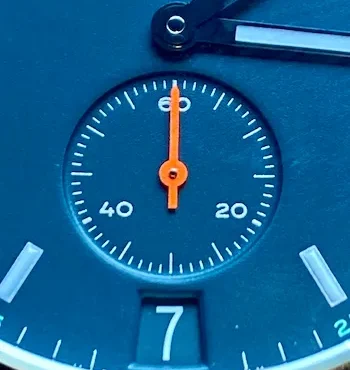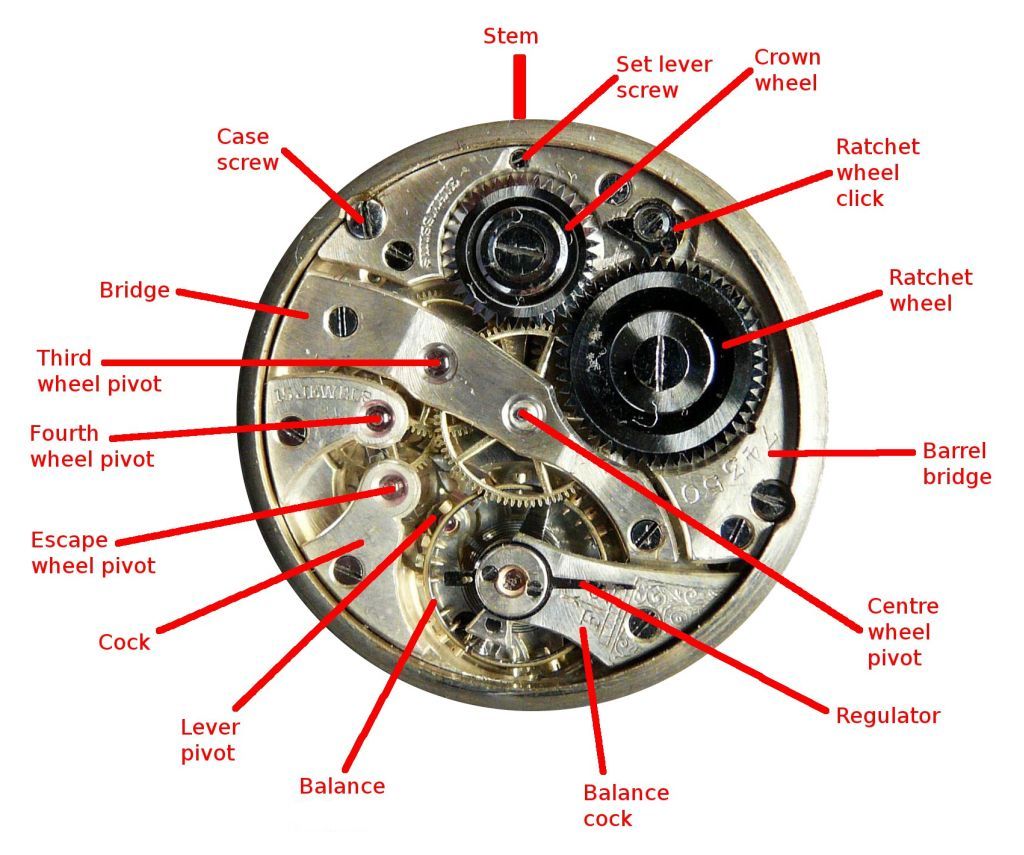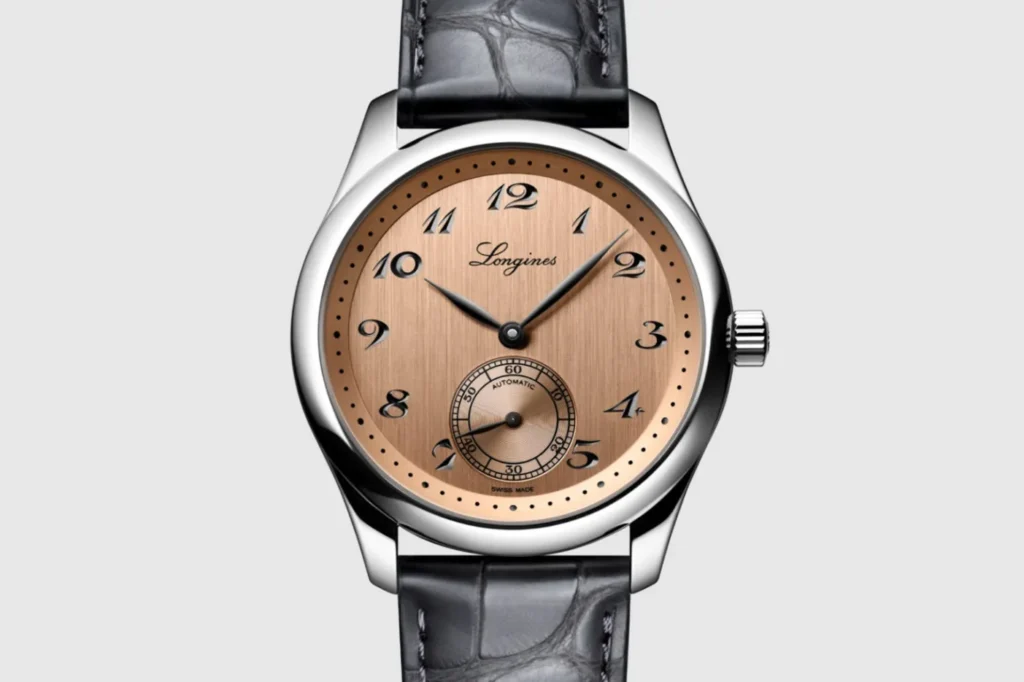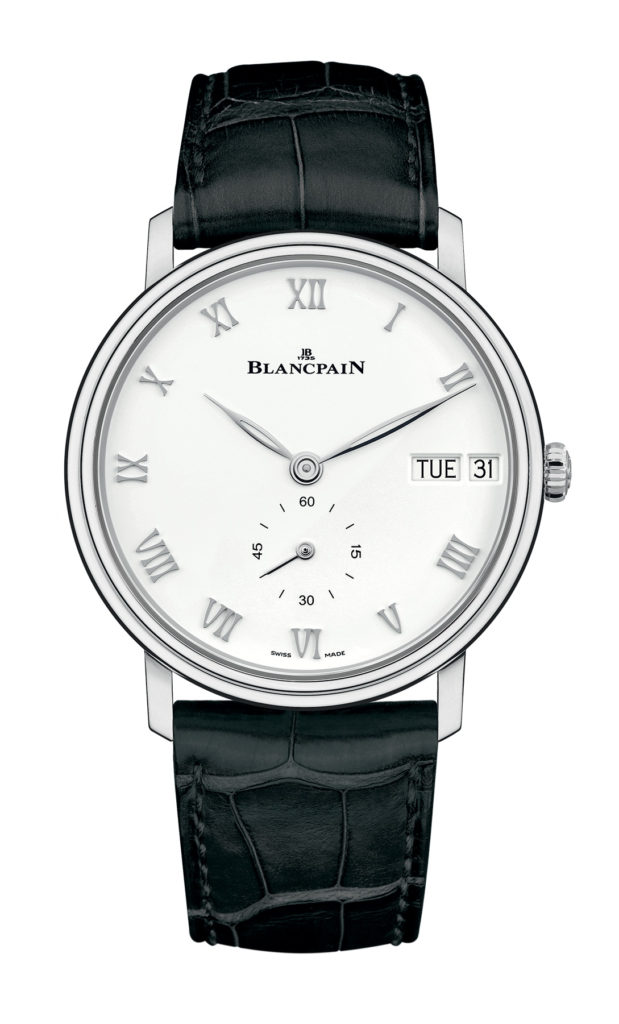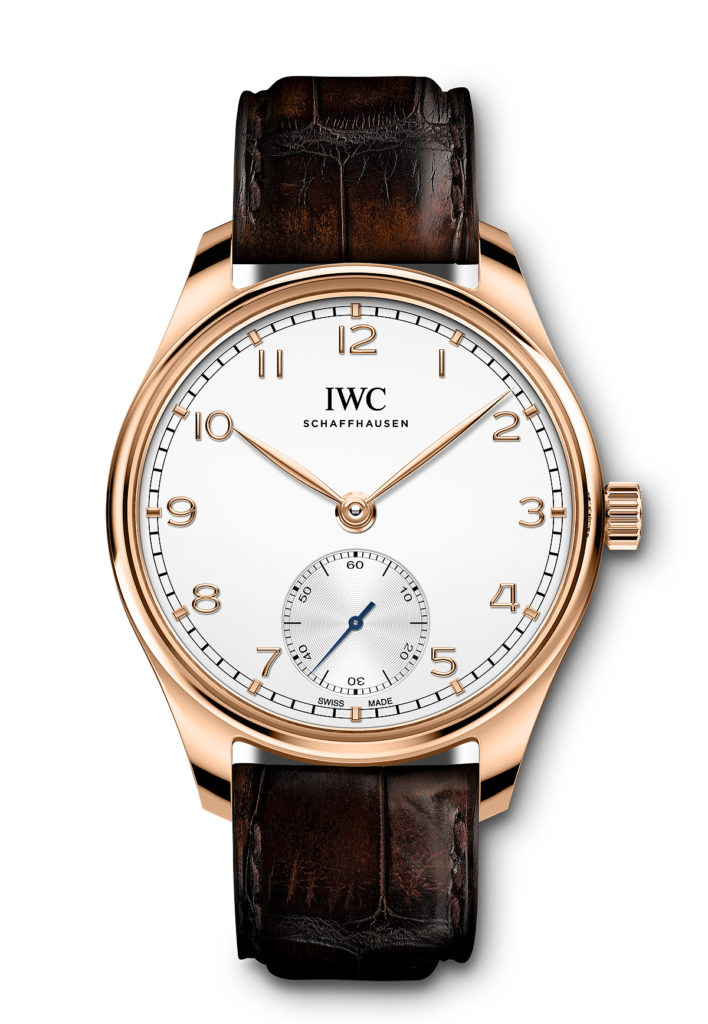It wasn’t until the middle of the 20th century that center seconds hands began to appear on a regular basis, in series-produced movements. Today, most movements are designed to have center seconds hands.
Before the 1940s, almost all watches had a running seconds hand located in a sub-dial, usually at 6:00.
This was due to the layout of a classic watch gear train. If you want to have a seconds hand, the easiest way to do it is to take a gear in the train that turns once per minute, extend the pivot on the dial side so it goes all the way through the plate and dial, and stick a hand on it.
In virtually all watches, the gear in question is called the “fourth wheel” as it’s the fourth wheel in the gear train. The mainspring barrel, which rotates and has gears on its edge, is the first wheel. This turns the center wheel (which is at the center of the movement) once per hour. The center wheel drives the third wheel, which drives the fourth wheel. The fourth wheel turns once per minute, and if you put a hand on its pivot, you’ve got a second hand.
Just about all pocket watches have a small seconds hand located at the 6 o’clock position.
Diagram of a typical mechanical watch movement
Listed below are examples of watches with small sweep hands:
The standard design of most pocket watches with a sweep hand located at 6 o’clock, like on this Hamilton.
Longines master
Blancpain
Patek Philippe Geneve
Grand Seiko
IWC

Mark Sirianni
25 Fraley St.
Kane, PA. 16735
watchdoctorpa@gmail.com
1-814-558-4818 Cell
1-814-837-9435
CHARLEY PHOTO OF THE WEEK: Every FedEx package is double-checked by Charley, the director of quality control. Charley is a big fan of FedEx, especially when the drivers give her treats.


